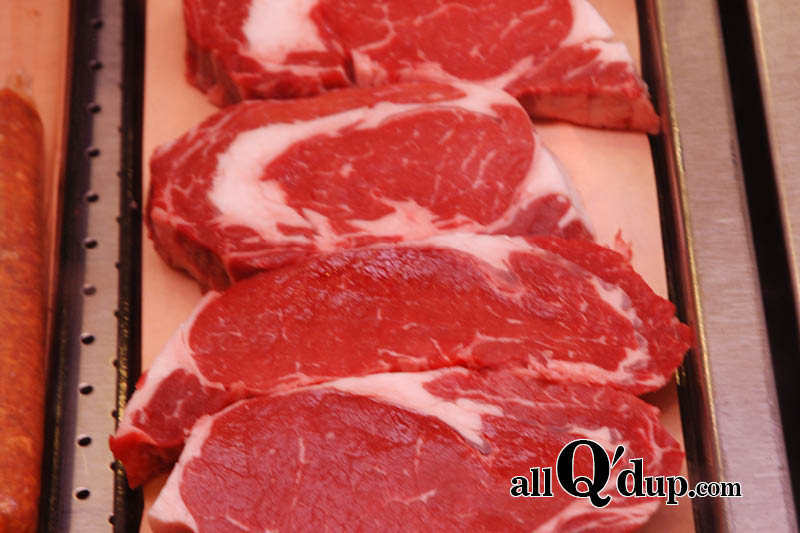Here are seven popular old wives’ tales regarding cooking steaks that Serious Eats put to the test. Read the full article for their cooking results for each myth.
A thick steak should be rested to room temperature before cooking.
Answer? False. The theory is that a steak is best cooked when the temperature is close to the finished temp – as it cooks more evenly. The result was that after cooking two steaks side by side (one rested, other one cold) both steaks had the same evenness of cooking, and they seared at the same rate.
Searing meat will lock in juices.
Searing will not lock in juices. Actually, it is best when grilling to to start out on the cooler side of the grill, and then finish on the hotter side for best crust formation, and a juicier end product.
Bone-in is better than boneless, because the bone will leach out flavor as the steak cooks.
No exchange of flavor was found after grilling a bone-in steak when compared to the same cut that was boneless. But, the meat around the bone will cook at a different rate than the other parts (much slower and lower) and therefore will be more juicy than the rest of the cut.
Only flip your steak once.
Wrong. Flipping it multiple times will cook it faster, and will help with curling problems when the fat and connective tissues cook at a faster rate than the rest of the meat. But, the best grill marks are those when the steak has been on the grill long enough to get the char marks, and if the grill is hot, you’ll get multi marks if you turn it multiple times.
Season after cooking because salting before cooking dries it out.
Actually, a dry surface area is best for a deep color, so salt it at least 45 minutes before you plan on cooking it.
Turning a steak with a fork or cutting it open once to check doneness will make a steak lose all the juices.
The reality is juices will be lost, but not so much as to actually make a real difference.
Poking it with your finger is the best way to check if a steak is done.
Well, not everyone is trained to know, by touch, what a rare, medium-rare, and a well-done steak is. Also, every cut of meat will cook up differently, and some fatty steaks will always be softer than a lean steak at the same degree of doneness.
There you go.
Image of steaks courtesy morguefile.


 Welcome to All Q’d Up. Dedicated to the art of barbecue.
Welcome to All Q’d Up. Dedicated to the art of barbecue. 